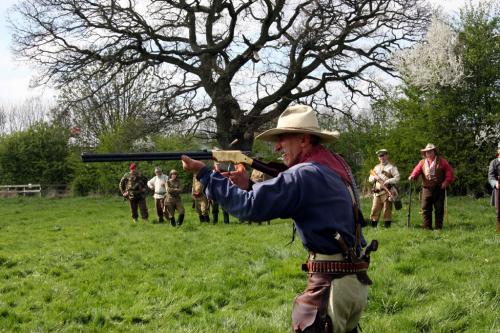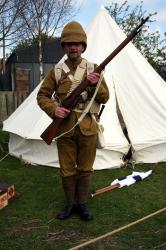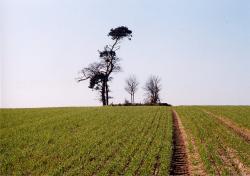Translate this Page
Anniversaries for today :
Welcome to Clash of Steel!
[ About us ]
[ Contribute a battle ]
[ Contribute a review ]
[ Contribute a reenactment group ]
[ Contact us ]
Featured battle : Bitche
Part of The French Revolutionary and Napoleonic Wars
Date : 17 November 1793
A Prussian raid was planned on the 'impregnable' fortress of Bitche [Bitsch] . Entry was gained with the aid of a French traitor but the attempt was discovered when the Prussians had only gained entry to the outer defences. They were then repulsed with heavy losses.
Featured image :
Firepower through the ages - Henry Rifle - MUR3_ftahenry4

Loading and firing the lever-action Henry rifle popular in the America of the 1860s incuding the wild west and the American Civil War
Gallery updated : 2022-04-04 08:33:43
Featured review :
Armoured Warfare in the British Army 1939-1945
Dick Taylor
This is the second book in a three part series on Armoured Warfare by Dick Taylor. Part one has a good review on this site and this book is every bit as good. The enormous amount of research is presented in a easy readable way and would appeal to a large range of readers. The key story is the rapid development of both the hardware and the application of it brought about in the heat of warfare. The many failures including those of the senior commanders in the struggle to catch up with German tank warfare are clearly spelt out. The story is told by following the course of the war through the armoured units involved in the variety of campaigns. There are appendices on some technical aspects and a good and necessary glossary.
This is a book to settle down with for a good read or to use as a reference on armoured actions in World War Two. Roll on the third book of the series.
Pen & Sword Military, 2022
Reviewed : 2023-01-02 14:44:46






